Let’s talk about reproduction, the biological process that enables species to create new generations of offspring. Like most animal species that begin their reproductive journey with a sexual encounter, snails are no exception. These seemingly unassuming creatures hold within them the secrets of an extraordinary reproductive journey that is as intriguing as it is unique.
Snails reproduce sexually or asexually. Sexually, snails engage in internal or external fertilization, resulting in the birth of live young or eggs hatching. Aquatic snails reproduce asexually through self-fertilization, exhibiting hermaphroditism. They can lay eggs or give birth to live offspring.
Prepare to embark on a captivating exploration into the remarkable world of snail reproduction, where slow and steady meets intricate and astonishing. Get ready to discover a realm where love darts, hermaphroditism, and eggs hidden away in tiny capsules create a tapestry of life that will leave you awestruck.
Key Takeaways
- Except Periwinkles, all snails are hermaphrodites.
- During mating, snails can take on either a male or female role.
- These roles are distinct and specific to each mating session.
- Snails display a strong attraction to potential mates and engage in a complex courtship process.
- Mating sessions can last for several hours before copulation occurs.
I highly recommend reading an informative article I wrote that discusses the effects of tap water on snails and offers guidance on how to properly care for them.
As you read through this article, I’d also like to share an interesting YouTube video that visually represents the topic I will be discussing.
Enjoy!
Simultaneous Hermaphrodites
Simultaneous hermaphrodites are a fascinating subject, especially regarding the large species of pulmonated snails. These creatures can survive on land and breathe air through their pallial lung, which is remarkable.
However, the Physidae (scientific name Physa acuta) takes things to the next level by being a simultaneous hermaphrodite.
During mating, these snails can engage in cross-fertilization but also self-fertilize.
The Sexual Roles
Despite their unusual mating process, snails have clearly defined male and female roles. If you ever have the chance to observe them mating, you can easily tell the difference between the genders based on their behaviors.
Male snails demonstrate specific behaviors when taking on the male role, including:
- Slowly approaching the female target.
- Climbing on top of the female’s shell to reach the perfect mating position
- Approaching the gonophore.
- Copulation lasts anywhere from 5.5 to 15 minutes.
- Slowly descending from on top of the female.
The Search for a Suitable Mate for Reproduction
It is remarkable how many of life’s opportunities we often take for granted. A prime example of this is the ability to meticulously search for an appropriate mate for the purpose of reproduction.
With the advent of the internet, we no longer have to rely on chance encounters to find our soulmates, which has significantly reduced the challenges of physical distance that creatures such as snails face.
Snails, depending on the species, have significantly slow travel speeds. Snails travel at an average speed of 0.5 inches per second.
In comparison, the slowest snail moves at 0.1 inches per second, and finding a mate with that speed is no small feat. Additionally, there is the issue of rejection, as we all know about mating in the animal kingdom.
A male snail identifies a suitable female, and he fights off other competitors, with only the fittest surviving. Female snails do not easily succumb to the advances of a potential male partner.
I recall a story about a male snail named Jeremy, who lived in the United Kingdom and had a rich brown shell. Jeremy was a suitable mate, but he struggled to find love because the females in his immediate ecosystem preferred to mate with one another, leaving him no opportunities for reproduction.
Jeremy’s case was unique, although it closely mirrored the struggles of some men in a female-dominated environment. His shell had an unusual shape that repelled potential mates.
Jeremy’s keepers made a distress call for a suitable mate to be found, preferably one with the same rare genetic condition. The call for assistance, which traversed international borders, bore fruit, and two potential mates named Tomeu and Lefty were brought to Jeremy for him to choose one.
Jeremy returned from hibernation one day to find the two potential partners mating. The offspring from this union now number over two hundred and crawl all over Jeremy, reminding him of his missed opportunity for parenthood.
But Why the Interest in Jeremy’s Case?
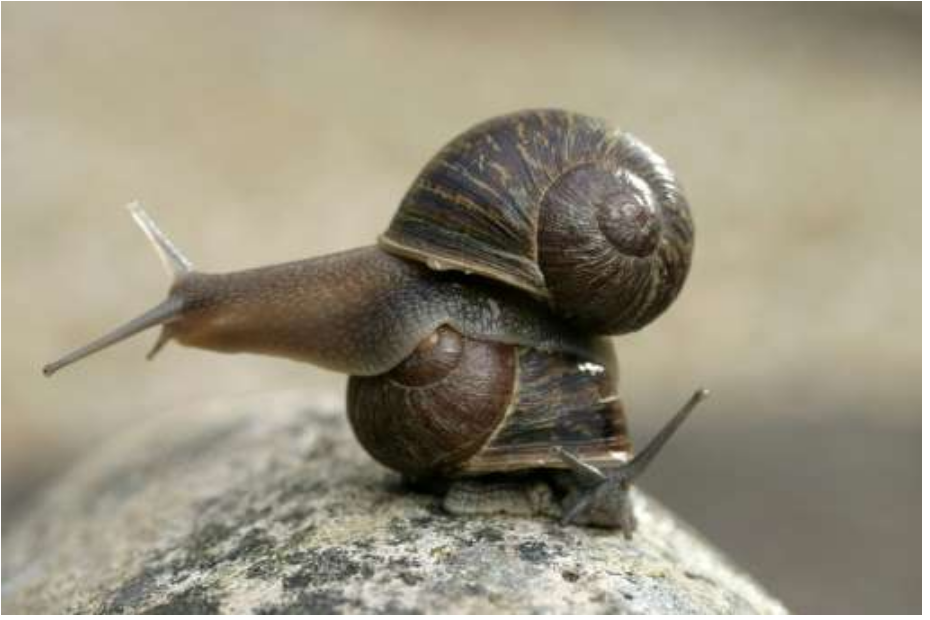
Have you ever wondered why Jeremy’s story became so popular? Well, it’s a common experience for humans to face rejection from suitable partners. Sometimes, it simply means that the other person isn’t interested.
However, in Jeremy’s case, his rare genetic condition caused his shell to coil to the left, while most of his potential mates had shells coiled to the right.
You might be thinking, “What’s the big deal?” After all, snails have both male and female sex organs, right? While true, successful copulation between snails requires proper alignment of these reproductive organs.
Unfortunately, it’s almost impossible for two snails with shells coiling in opposite directions to mate successfully. That’s where Jeremy’s story gets interesting.
The two snails that were brought to him for breeding actually provided researchers with enough offspring to better understand what causes this rare left-coiling shell.
Read more of Jeremy’s story in this extensive article: The Story of Jeremy, the Left-Coiled Snail.
What Other Snails Do to Get Noticed: The Complex Courtship
Let’s talk about snails and their complex courtship rituals. It turns out that these slimy creatures share some interesting similarities with humans.
While many animals mate only during specific seasons, snails are always up for some love if the mood strikes them. Of course, like all living beings, snails have basic needs that must be met for survival, such as:
- Food
- Water
- Shelter
But once those needs are satisfied, their desire to procreate kicks in, and that’s where courtship comes in.
Just like humans, snails feel a strong attraction to potential partners, and they engage in mating rituals to fulfill their desires.
So, how does snail courtship work?
- When a snail is interested in a potential mate, it’ll make a seductive approach and start crawling over them.
- Using their tentacles (sensory organs that help them detect environmental smells and find food), they’ll kiss-tap the chosen mate.
- The two snails dance, rolling their slimy bodies around each other for up to an hour.
But that’s not the only way snails try to get noticed. Some release chemical signals to let potential mates know they’re interested in “babymaking.” Since snails have an excellent sense of smell, this is a reliable way to attract a mate.
Snails, like humans, can get pretty crafty when it comes to hunting for a mate. They use a love dart to pierce the soft side of their partner’s outer skin.
The love dart is named for its thorn-like shape and is covered in mucus. It also contains calcium bicarbonate, which enters the target’s bloodstream to influence their physiological and behavioral responses.
Some snail species are known for using love darts, including those from Helicidae, which are native to the southwest part of the United States. Other species that use love darts are Xanthonychidae and Philomycidae, native to eastern North America.
However, the largest species of snails, Polygyridae, also native to the eastern parts of North America, do not use love darts.
It might seem strange, but snails are quite romantic creatures. They engage in kissing and dancing, which are significant displays of affection for animals only seeking a partner for reproduction.
Interestingly, snails put a lot of effort into courtship because they enjoy sex probably as much as humans do. Years of observation indicate that snails engage in prolonged courtship before actual copulation occurs.
Their complex courting involves something akin to wine and roses, followed by a final love-dart attack that seals the fate of the hunting snail.
More Science Behind the Love Dart
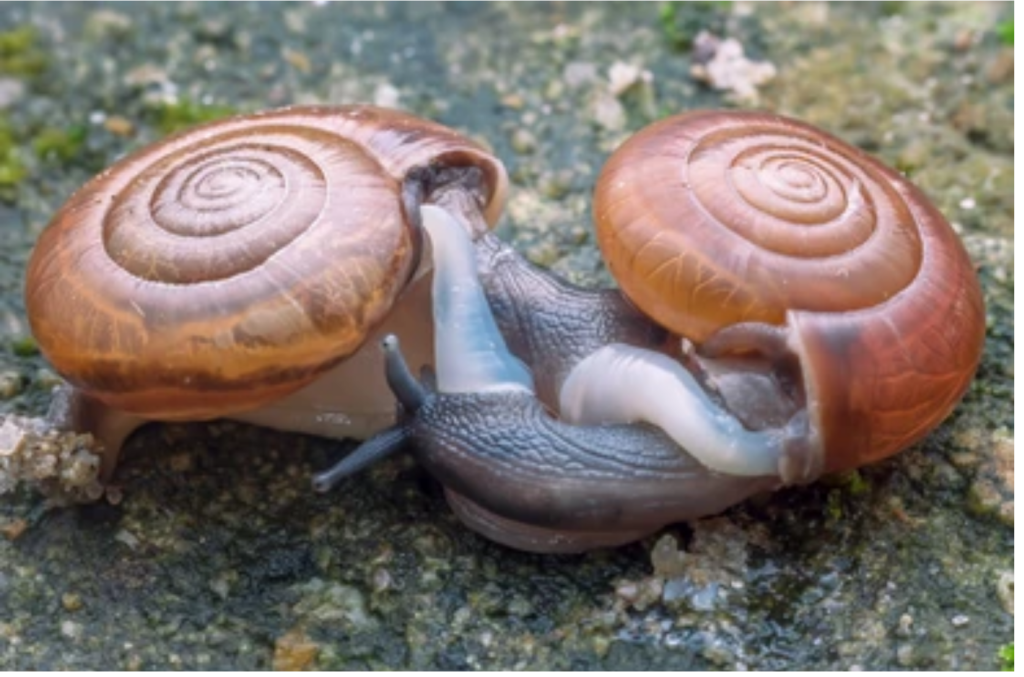
In our previous conversation, we learned that snails are hermaphrodites, and the love dart is an intentional tool used by males to increase their chances of reproducing with their chosen mate.
The love dart is typically used by male snails towards the end of their romantic overtures, approximately thirty minutes before copulation.
Initially hidden in the snail’s internal sac, the dart is released when the male is ready to mate. Although it may appear painful, the act is the most romantic gesture a snail can make. It transforms the selected partner into a female-oriented mate during courtship.
The love dart maximizes the snail’s male side by containing hormone-filled chemicals, which prevent the female partner from destroying the newly introduced sperm during copulation.
As both snails simultaneously transfer sperm, the hermaphroditic nature of snails comes into play. The snail that successfully uses the love dart improves its chances of being the ultimate procreator due to the chemical influences of fertilization.
A Sexual Arms Race?
It turns out that these darts aren’t as harmless as they seem. In fact, they play a crucial role in a snail’s “sexual arms race.”
When snails mate, one snail will shoot a love dart into the body of their partner. This boosts the shooter’s chances of propagating their genes and ensures their sperm fertilizes the eggs.
The guilty snail will seek another mate, demonstrating a desire to mate with as many snails as possible.
At first, scientists thought the love darts were a sweet display of affection. However, they soon discovered that darted snails tend to have shorter lifespans (reduced by about 60 days) and lay fewer eggs. It seems that the love dart comes at a heavy price for the snails.
Furthermore, the darted snail’s reduced libido contradicts the initial demonstration of affection by the hunting snail. This suggests that the love dart is actually a selfish act designed to enhance the shooter’s chances of continuing their lineage uninterrupted.
It’s worth noting that scientists are still trying to determine the primary cause of reduced libido. It could be due to the physical trauma caused by the love dart or the chemical it injects into the target snail’s body.
Overall, the snail world’s paternity race is a dangerous game that leaves casualties in its wake. All for the chance to fertilize the chosen mate’s eggs. Isn’t nature fascinating?
The Fertilization Process of Snails
After copulation, the fertilization process in snails begins immediately. The eggs, which are still developing, remain inside the snail’s body until they are mature enough to be expelled into the environment.
Gestation Period of Snails
The gestation period of snails varies depending on the species. For some snails, the gestation period may take a few days, while others may take longer. Snails are hermaphrodites, meaning both snails can lay about a hundred eggs each, and some species can lay up to 400 eggs! The more eggs a snail lays, the higher the chances of survival.
To ensure the survival of their eggs, snails living on land use their ventral feet to dig up selected spots on the moist ground.
Despite their slimy and weak appearance, snails can create depressions in the soil measuring two to four inches deep. They also lay a dense, viscous coating on the eggs to enhance their safety.
Hatching Process of Snails
Under favorable conditions, snail eggs are ready to hatch after being in the ground for about two weeks. However, in some cases, snail eggs may stay in the ground for up to a month before hatching.
Offspring of Snails
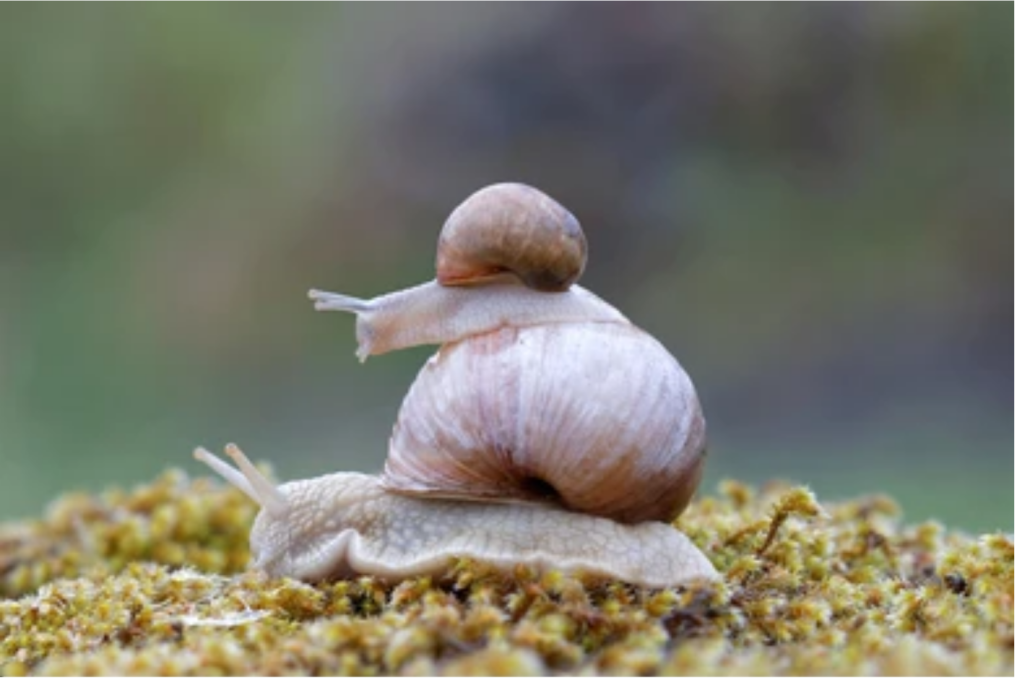
The number of offspring a snail gets depends on how many eggs survive. Snails face external aggressions from predators or environmental factors, such as heavy rains, that may wash away the eggs. Therefore, the survival of the offspring depends on how well the snails keep predators away.
After hatching, snails do not immediately abandon the shells of their eggs. Instead, they use them as their first source of calcium before leaving the nest to find more food to meet their growing nutritional needs.
Eggs that do not hatch become a source of calcium for snails that are already out of their shells.
How Do Snails Know the Other Is Ready to Be a Parent?
Like other animals (and humans!), snails reproduce when they reach maturity. But how do they know when they’ve hit that milestone?
Well, it turns out that the age of maturity can vary between different species of snails. Most snails are typically old enough to reproduce after being alive for about a year.
However, some snails are considered mature enough when they’re around a month and fifteen days old and measure around 1 inch (2.5 cm) in size.
Once they reach maturity, snails reproduce for the rest of their lifespan. Speaking of which, the average lifespan for most snails is between 5 and 7 years. And during that time, they can produce thousands of offspring!
Related Reading: How Long Do Snails Live?
Reproduction in Aquarium Snails
Snail reproduction is a complex process. Most land snails reproduce sexually, which can occur through external or internal fertilization. In the case of internal fertilization, the male snail deposits genetic material into the female snail’s reproductive tract, which then fuses under favorable conditions.
Following this, the female snail may either lay eggs that will hatch later (oviparous), as seen in pond snails, or give birth to live young (viviparous), such as the thunderbolt snail.
On the other hand, external fertilization involves the female snail releasing unfertilized eggs into the tank in a whitish-cream translucent form. These eggs stimulate the male snail, through hormones, to release sperm into the tank in the hopes of encountering favorable conditions for fertilization.
The outcome of this external fertilization process primarily results in larvae that develop in specialized sacs until they reach maturity. At that point, the sacs rupture, releasing tiny baby snails (ovoviviparous), as observed in Nerite snails.
Most aquatic snails reproduce asexually and involve self-fertilization, where the same snail produces male and female gametes. These aquatic snails are hermaphrodites, possessing separate male and female reproductive systems that function independently until the sperm and egg are ready to fuse for fertilization.
Following fertilization, these aquatic snails can either lay eggs in the water, like mystery snails, or give birth to live young, like assassin snails.
Here are some interesting facts about aquarium snails’ reproduction:
- Younger snails prefer the male role during mating.
- The prostate gland in younger snails tends to elongate faster than it does for older snails, affecting their mating preference.
- Older snails have no option but to adopt the female role during mating.
- The mating process depends on resource investment, such as having more eggs.
- Mating between these snails can happen weekly.
- Received sperm can remain within the snail’s body for three months.
- They produce a mass of eggs every week.
Do Freshwater Snails Give Birth to Live Young?
While some species of freshwater snails lay eggs, others give birth to live offspring, a process typically associated with mammals.
One such species is the Melanoides tuberculata, a Malaysian burrowing snail known for reproducing sexually.
Unlike egg-laying snails, live-bearing snails allow their eggs to develop in the brood pouch of the mother snail. Once the tiny snails are fully-formed and ready, they exit the pouch.
Compared to asexual reproduction, live-bearing happens relatively quickly, occurring once every few weeks as long as the outside temperatures allow.
Egg-laying snails deposit eggs in masses of up to 400, while live-bearing snails give birth to one young snail at a time. These young snails are fully developed and look like small versions of their adult parents.
It’s worth noting that while live-bearing snails are fascinating, egg-laying snails remain prevalent in the aquarium trade. This is likely due to their ease of care and high reproductive capacity, making them easy to breed and maintain.
Improving Aquarium Snail Breeding
Aquarium snails are fascinating creatures that require special care to thrive and reproduce.
Unlike garden snails that rely on nature, aquarium snails depend on their human caretakers to provide them with everything they need.
If you’re interested in breeding aquarium snails, here’s what you should know.
- You’ll need an aquarium. This can be a simple tub or an elaborate tank with different fish species. Regardless of the size or complexity, make sure to fill the container with water and live plants. Live plants serve as a source of food for the snails and help maintain the water quality.
- Ensure that the aquarium is at the right temperature. Snails mate and reproduce under specific temperatures, so regulating the water temperature is crucial. You can do this by fitting the aquarium with a heater.
Conclusion
In conclusion, snails are fascinating creatures with a strong desire to reproduce and their basic needs of food, water, and shelter.
Despite their unique characteristics, all snails go through a similar reproductive process that involves the following:
- Complex courtship
- Intense love-making
- Fertilization
For example, garden snails can experience simultaneous fertilization during mating, while aquarium snails can self-fertilize. The fertilization process is then followed by either egg-laying or live-bearing, depending on the species.
One interesting aspect of snail reproduction is their hermaphrodite nature, which means they can play both male and female sexual roles. This ability to oscillate between genders is a unique adaptation that allows snails to reproduce efficiently and effectively.
Frequently Asked Questions
Can aquarium snails reproduce on their own?
Aquarium snails can reproduce on their own due to their hermaphroditic nature, allowing for self-fertilization. However, the genetic strength of their offspring may vary as self-fertilization can lead to reduced genetic diversity and potential issues in long-term adaptation and resilience.
How fast do aquarium snails reproduce?
The reproduction rate of aquarium snails can vary depending on various factors such as species, environmental conditions, and available resources. In optimal conditions, some aquarium snails can reproduce rapidly, with populations potentially growing exponentially within a short period. It is not uncommon for aquarium snails to produce multiple generations within a few months.
Do mystery snails need a mate to reproduce?
Mystery snails have distinct sexes and require both males and females to reproduce. They cannot change their sex or reproduce asexually. Despite any misinformation, it is important to note that both male and female snails are necessary for successful reproduction in mystery snails.
Do apple snails reproduce asexually?
Apple snails do not reproduce asexually. While they are hermaphroditic, possessing both male and female reproductive organs, mating between two snails is necessary for reproduction. They lay clusters of pink, calcareous eggs above the waterline during the warmer months, typically on solid objects near the water’s edge.
How do common snails reproduce?
Common snails are hermaphrodites, possessing both female and male reproductive cells. They can reproduce through self-fertilization, although mating with another snail is also possible.
Sources
- ModestFish: How Do Aquarium Snails Reproduce?
- Marine Invasions Research: Melanoides Tuberculata
- Pets on Mom.com: How Do Freshwater Snails Have Babies?
- AZ Animals: Snail Lifespan: How Long Do Snails Live?
- Learn About Nature: Snail Life Cycle – Birth, Development & Mating Habits
- The Royal Society Publishing: The Direct Cost of Traumatic Secretion Transfer in Hermaphroditic Land Snails: Individuals Stabbed with a Love Dart Decrease Lifetime Fecundity
- KQED: Everything You Never Wanted to Know About Snail Sex
- Pets on Mom.com: What Are Snails Attracted To?
- The Guardian: Jeremy the Lonely, Left-Coiling Snail Loses Out in Love Triangle
- Oxford Academic: Body Size–Dependent Gender Role in a Simultaneous Hermaphrodite Freshwater Snail, Physa Acuta
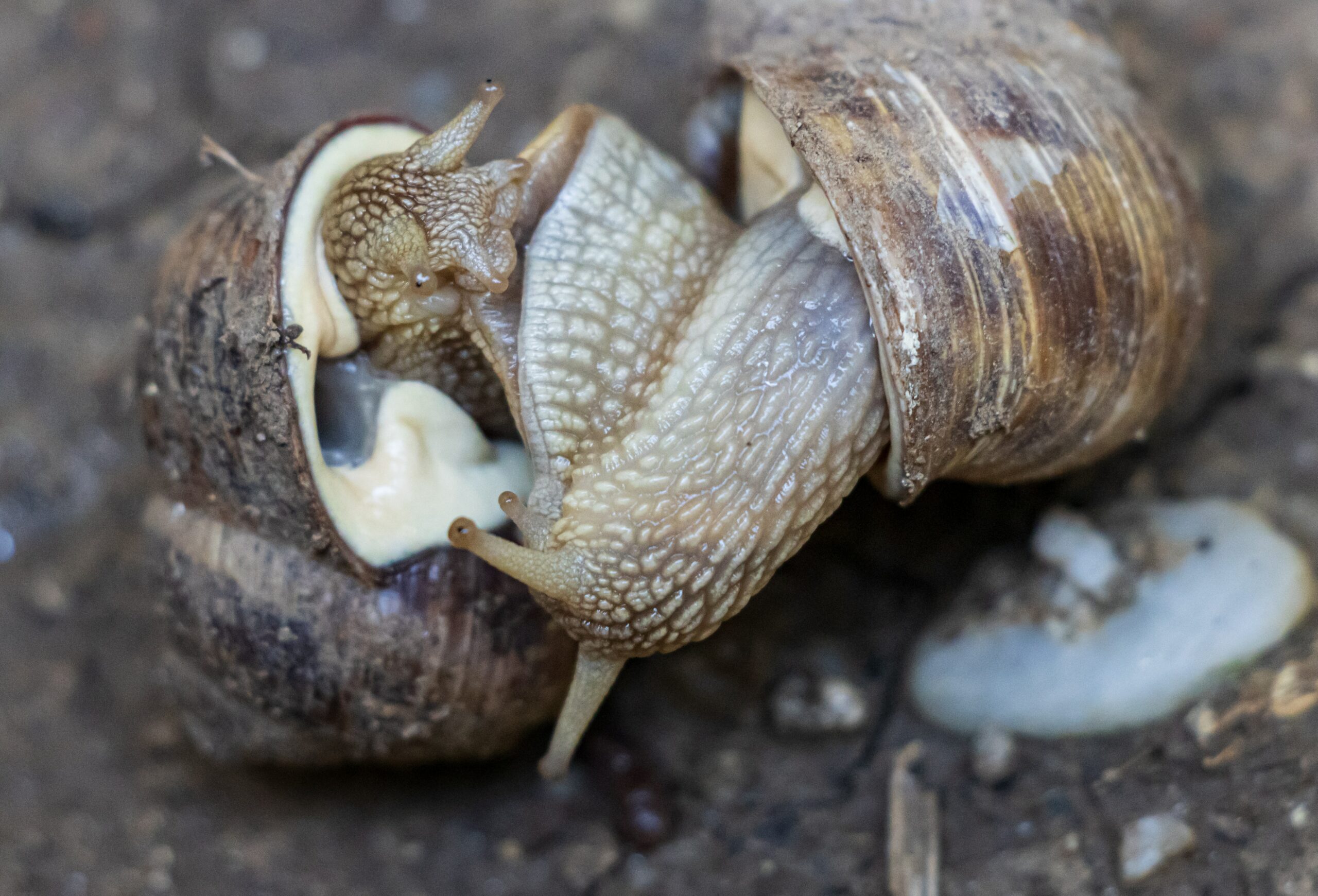
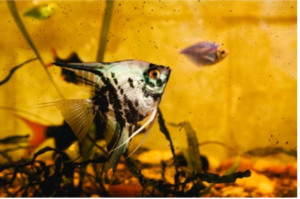
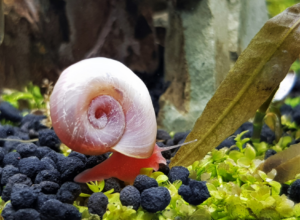
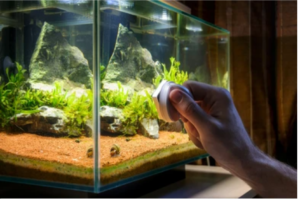
This was so interesting and informative! Thankyou for writing this <3
Had read about Jeremy in Maria Popova's "The snail with the right heart" and its reference here just made my day!
Hi Bammidi.
Thank you for reading my post and leaving such a kind comment! I’m glad you found it informative and enjoyed the reference to Jeremy the snail. Snails are truly fascinating creatures with so much to learn about them.